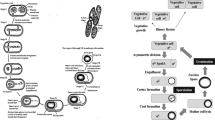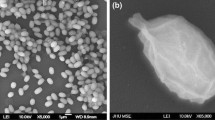Abstract
The effect of different concentrations of sodium chloride (NaCl) in the recovery medium on the apparent thermal resistance of Bacillus stearothermophilus spores (strain ATCC 12980) was studied. Spores were heated at different temperatures (115–125°C) and subcultured in medium with different NaCl concentrations [1, 2, 3 and 3.5% (w/v)]. The results indicate that increasing NaCl levels decreases the apparent heat resistance of the spores, over a temperature range of 115–125°C. No significant difference was found between 3 and 3.5% (w/v) NaCl although both reduced B. stearothermophilus heat resistance considerably. A second-order polynomial equation provided a good description of the spores’ D value, as influenced by the temperature and NaCl concentration. Predictions from the model compared well with published data, and therefore the model is suitable for predicting the effect of NaCl concentration on thermal inactivation of B. stearothermophilus.
Similar content being viewed by others
Author information
Authors and Affiliations
Additional information
Received: 24 June 1997
Rights and permissions
About this article
Cite this article
Periago, P., Fernández, P., Ocio, M. et al. A predictive model to describe sensitization of heat-treated Bacillus stearothermophilus spores to NaCl. Z Lebensm Unters Forsch 206, 58–62 (1998). https://doi.org/10.1007/s002170050214
Issue Date:
DOI: https://doi.org/10.1007/s002170050214




